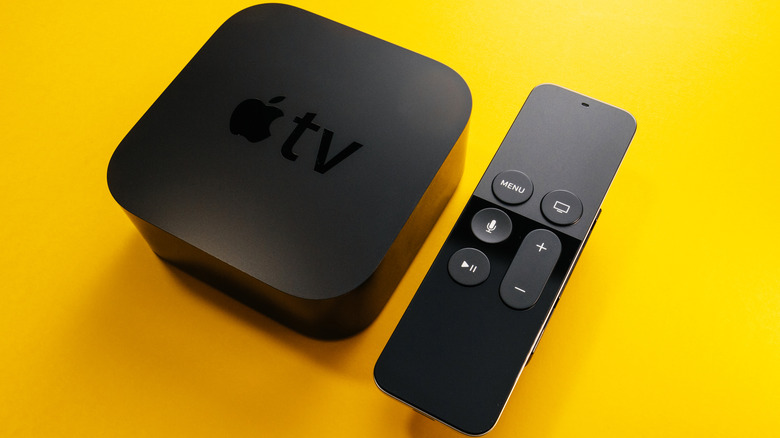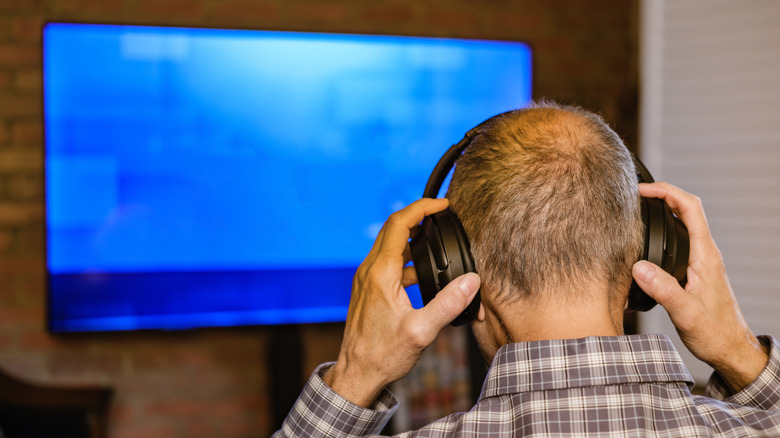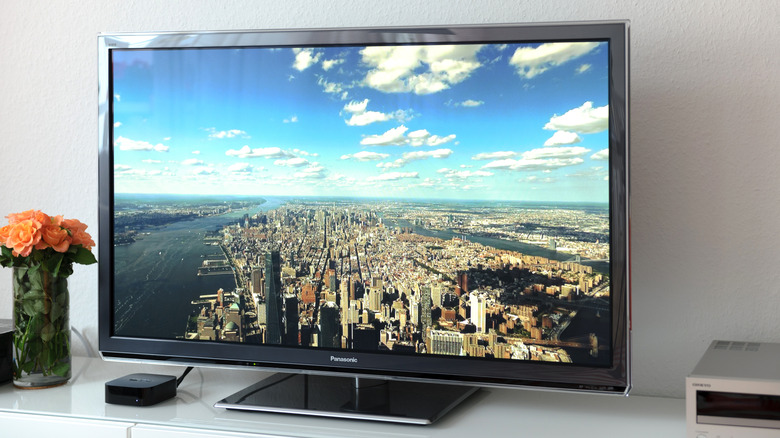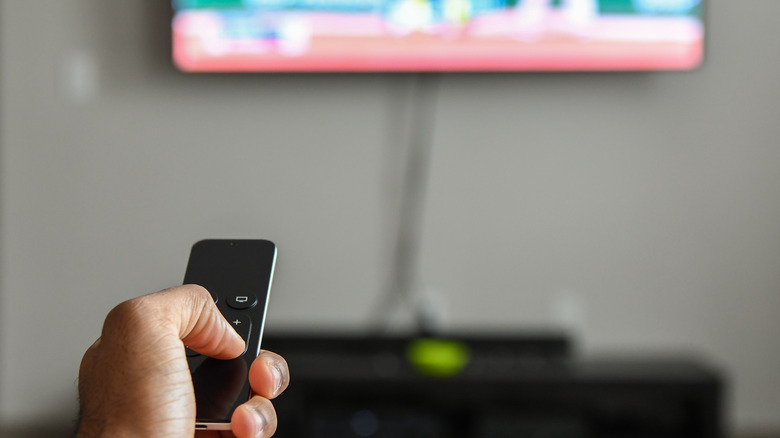Hidden Apple TV Features That Every User Should Know About
The original Apple TV was launched in 2007 to tepid fanfare, but since then, smart TVs and streaming sticks have become household items. By the time the third-generation Apple TV 4K debuted in the fall of 2022, the device had become a vital part of the Apple ecosystem for many users, just as useful as the iPhone, MacBook, and Apple Watch.
But even if you've been using an Apple TV 4K for years, there are some things it can do that you may not be aware of. It's basically a small computer plugged into your TV with so many different features that it's hard to keep track of them all. Many have to do with the way you watch television, which is the product's primary purpose, but others are connected to the larger Apple ecosystem and make the product more than just a suped-up streaming stick.
Here are some of the hidden Apple TV features that every user should know about to help ensure you're getting the most out of your Apple TV 4K.
Connect Bluetooth devices
These days, Bluetooth capability is nearly as essential to a product as Wi-Fi. Between the proliferation of wearables and the Internet of Things, nearly everything can be enhanced by being connected to something else (or, in a lot of cases, they outright need to be connected). Fortunately, the Apple TV makes it easy to pair with other devices via Bluetooth.
There are a number of useful applications this allows for. You can connect a set of Bluetooth headphones, including AirPods if you're trying to watch something quietly while others are trying to sleep or work in your home. Wireless headphones are great for TV if you're also watching it in the background while you take care of chores around the house.
You can also pair a wireless keyboard to the Apple TV, which makes typing text a lot easier. This is especially useful for inputting login info and credit card data for various apps. Another device you may want to connect with Bluetooth is a game controller, so you can take advantage of Apple Arcade, which integrates seamlessly with Apple TV. Bluetooth can be quickly accessed in the Settings menu, where you can then pair a device.
Use Dark Mode or quickly turn on screensavers
By default, the Apple TV 4K will switch to dark mode based on the time of day. But if you prefer to use dark mode around the clock, giving your eyes a break from the bright white backgrounds that dominate so many apps, you can set your device permanently to dark mode. Go to Settings > General > Appearance to switch your Apple TV 4K display to dark mode. You can access these settings whenever you want to switch them back.
Another useful display option is the ability to quickly turn on a screensaver. Apple TV is famous for its slow-motion aerial city landscapes, which are coming to macOS, and you may not want to wait for them to automatically appear after your TV goes idle. If you have company over, don't want to turn your TV off, or would like to immediately access the Apple TV screensavers, just go to the top-left corner of the Home screen and press your Apple TV Remote's Menu button.
Set Parental Controls and other restrictions
The Apple TV lets you restrict access to some content and certain features from other users. This is great if you have young children and want to make sure they're not watching anything too mature, but it's also useful if you share the device with roommates or other people you'd rather not have access to your credit card or alter your preferences, for example. By going into Settings > General > Restrictions, you can choose what you'd like to be firewalled behind a four-digit passcode, which you can then share with anyone you're okay with bypassing these restrictions.
With these settings, you can restrict the ability to buy paid content or in-app purchases, limit what content can be viewed based on content/age ratings, prevent users from playing multiplayer games or adding friends in Game Center, or keep someone else from changing AirPlay or Location settings for the device. Keep in mind that you may need to go into the settings of some third-party apps to restrict content if the Apple TV can't access or control those settings directly.
Customize closed captions and equalize volume
Even if you don't have hearing problems, you may prefer to watch TV with subtitles. You may be keeping the TV low while your kids are asleep, are watching something in another language, or just like to read along while you watch. Whatever the reason, you aren't limited to the default style of the Apple TV's closed captions.
Different looks for the text, including its font and background, are available. You can customize a new style or choose alternative options by going to Settings > Accessibility > Hearing > Subtitles and Captioning > Style. You can permanently save custom styles after creating and editing them by giving them a name (Description) — they'll then be available as options later in the Style menu.
Another reason you might keep the volume low and closed captions on is that a lot of content will have its action or music way too loud. This can be frustrating when you're constantly fiddling with the volume, turning it up when characters are speaking before quickly turning it back down during a loud action scene. Fortunately, you can equalize the volume on an Apple TV using the Reduce Loud Sounds feature, available in the Video and Audio Settings, or by selecting the Audio Options button in your playback controls. This feature will keep dialogue loud enough to hear while automatically dropping the volume when the action or music peaks too high.
Use Apple TV as a conference display
The Apple TV doesn't need to be used just for recreation — like MacBooks, iPads, and other Apple devices, it can work just as well for work. It's especially useful in meetings at the office because you can use it as a shared conference room display. You and other co-workers can all share their screens from a macOS or iOS device using AirPlay.
To make things as streamlined as possible, you can put a message on the display instructing everyone how to connect to the wireless network and shared Conference Room Display. You can also select a photo to set a default background for the display and preview what it will look like before the meeting begins. Go to Settings > AirPlay > Conference Room Display to access these features. If you want to use your Apple TV as a dedicated office device, you can lock it into Conference Room Display mode with a pin code.
Catch up on something you missed
If you missed an important line of dialogue or a funny joke, you can easily replay it without having to finagle your rewind and play buttons. Instead, you can just ask Siri to go back a bit with an intuitive prompt like "What did she just say?" Siri will understand that you missed a line and automatically rewind 10 seconds and play again. It will also briefly provide closed captions to really make sure you know what the character just said.
If you want to be more exact with your playback controls, like going back and rewatching an entire dramatic scene, cool action sequence, or funny set piece, you can ask Siri to go back a specific amount of time, like "two minutes" or "83 seconds." You can also do the same to fast forward if you'd like to skip a scene you've seen before or a violent scene if there are children around, for example. Phrases like "go back" and "skip forward" work well with Siri, in addition to all the other things the smart assistant can do on your Apple TV.
Use the Apple TV Remote to control your TV or your TV remote to control your Apple TV
The Apple TV 4K remote, like many Apple devices, is sleek and minimalist. It gives you everything you need in a small amount of space and lets you use Siri for more advanced controls. If you want to streamline your entertainment setup, you can also pair the remote with your TV, so you don't need to switch back and forth between remotes. Go to Settings > Remotes and Devices, where you can enable your Apple TV Remote to turn on and off your television, as well as control its volume.
Conversely, you may have a universal remote you like to use to control your TV, sound system, and other devices. Rather than have a redundant Apple TV Remote lying around, you can pair the universal remote with the Apple TV by going to Settings > General > Remotes > Learn Remote. Even better, if you have iOS 11 or later, you can also control your Apple TV through your iPhone's Control Center.







